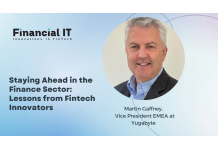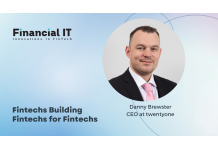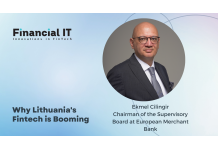Challenges of Using Product Approach in Fintech Development

- Yan Likarenko, Product Manager at Uptech
- 27.09.2022 11:30 am #fintech
Fintech app development is complicated, especially when building a fintech app with a “human face” that will speak the users’ language.
It is hardly a secret that to build a human-oriented fintech app, you must follow the Product Thinking approach. Yet, from my experience building fintech products, there are some hidden rocks in this process that I wish I had known earlier.
As a Product Manager I have experience building several fintech projects, and even more experience in using Product Approach in practice.
To make it easier for you, I want to share some tips on using product thinking approaches in fintech development and highlight some things that require special attention.
Let’s start!
What is the Product Thinking Approach?
Product thinking is a complex approach to app development based on the users’ needs and experience using the product. The Product Manager’s task here is to identify the user’s actual problem or need, define the target audience, outline the objective and build the strategy to achieve it and provide a simple and convenient solution in the long run.
At the basis of the Product Thinking approach lies the Product Discovery phase. Product Discovery is the process of identifying what exactly you need to build. It reflects your vision, clearly showing users’ needs and answers to the questions arising while building the Product Roadmap.
The important part of Product Discovery is User Research.
Tips to Build a Great Fintech Product
Carry Out User Research
At first sight, it may seem that banking apps are identical. Yet, this is another misconception about fintech development. Every banking app has its particular target audience, which means different business tasks.
Before creating anything, we need to explore the cultural and economic background of the region, its legal base, traditions, and historically acquired behavioral patterns. To this end, we need to talk to users, trying to understand how they prefer to retain and spend their money.
For example, in most regions, the matter of money is quite intimate, and any sign of uncertainty in the app’s UX can repel your users. So when, for example, the user opens the deposit, the app should clarify how much money they will get in the long run.
Explore Target Audience
In the project that I worked on, we faced another challenge: the target audience was people who were primarily older than the medium age. Even keeping it in mind, we intended to make a millennial-like UX design with cute graphic elements and an easy-going voice.
But all changed after we carried out the User Interviews.
After talking directly to our potential customers, we discovered that the fintech app would bring maximum value to such people, as it provides security and confidence.
Hands down, these characteristics would be critical for any group of people. Yet, middle-aged users might have more negative prejudice toward digital banking solutions than younger generations.
Therefore, we concluded that the UX of this fintech app should be conservative, simplistic, and detail-oriented.
Do Not Underestimate Technical Research
The Discovery Phase in fintech app development also includes the moment of Tech Research. The thing is that Baas services can have their own technical requirements, which can put some limitations or specifics that we need to solve as a team. Not to make it an unpleasant “surprise” during the development, you’d better explore them at the outset.
Tech research is important for two points:
To define the list of features and functionalities;
To understand whether you need any integrations or not.
For example, you need to know your service provider – the bank itself or a third party. It often happens that banks do not directly provide the necessary data. Instead, you might have to deal with the Issue Banks, operating via a “bank as service” model.
The challenge is that Issue Banks do not always provide complete information about the transactions and users. For example, the Issue Bank can provide information about the transactions, yet its description will be too poor or absent whatsoever.
The solution I would recommend here is integrating an Analytical Tool. By integrating the analytical service, you can also get a lot of useful information, like the remaining account balance, purchase address, spending categories, logo, etc.
Explore the Domain
The most challenging part of fintech development is the steep learning curve you have to make to start building the app. Not only do you need to learn a lot of new things yourself, but also you need to encourage your team to learn them too.
For example, you need to explore the existing types of bank profiles and transactions and instruments. It is essential not only to know what actions the user completes in the app but also to understand why they do it – why exactly the user wants to check the balance, get the excerpt, and make a transfer between their accounts. Again, User Research is the key here.
Besides that it is also important to understand what's important in your specific domain and what you can provide, what banking program can be provided, what options can be there etc.
Define Features and Functionalities
The two confronting problems of fintech app development is the feature set. Some fintech apps often have a limited list of features, while others have an extended one. Both practices are far from perfect.
The fintech app should allow us to complete essential goals. Trying to integrate as many features as possible can complicate the navigation. You should also remember that providing the same navigation in a mobile app is harder than on the web.
So before including any new features, you need to validate them via User Tests and ensure a user needs them.
Business Discovery
One more important part of the product discovery process in business discovery, which will include the following steps:
Stakeholders interview
Problem statement
Business & technical Assumptions
Competitors research
Business Model Canvas
User interviews
Define main Personas
Value Proposition Canvas
CJM (Customer Journey Map)
Concept Prototyping
User tests
Product requirements
This stage is also important to assess your limitation, only this time not of technical, but of business character.
Recap: Things to Consider When Building Fintech Apps
So let’s determine what measures you can take on the fintech development stage to get a people-oriented product in the long run.
Take the Team on a Learning Curve
Your whole team should know what’s fintech, how it works, account types, and operations types. Every mistake in this realm can cost your client a lot of money. There’s hardly room for an error.
Researches are Must Dos
Profound research is a must for a thriving fintech product. It includes several different researches, like:
Competitors’ research (to understand the general trends, popular tips, quarries, and needs);
User research (to see what your target audience needs specifically);
Technical research (to see the technical restrictions that you need to work with);
Business Research.
Seek Feedback Constantly
Feedback is your helping hand and not only at the stage of development. After you’ve launched the product's first version, it is essential to gather feedback from users to see what improvements they would like to see in the app.
For example, when we made our first product version, we included a feature of saving accounts with analytics and goals in the app. However, after some usage, the customers clarified that saving goals are not that important for them, so we removed this feature from the interface.
Product Approach is Your Lifesaver (Not a Burden)
When starting to work by the Product Approach, it may seem that it complicates things rather than helping. Indeed, this is a complicated process with all the research, tests, and interviews. However, this is a gratifying effort!
The Product Approach assures you that you are not wasting your time just coding but building a valuable product for real users.
Of course, balance is also essential here. So take the best from the Product Approach to build a great product for the users.
Conclusion
In general, fintech app development follows the rules of the Product Thinking Approach. However, some specifics come up working with fintech apps specifically. Yet, there are no two cases, and every project will face new challenges. However, the basics of Product Thinking are the pillars that will help in any case.
























